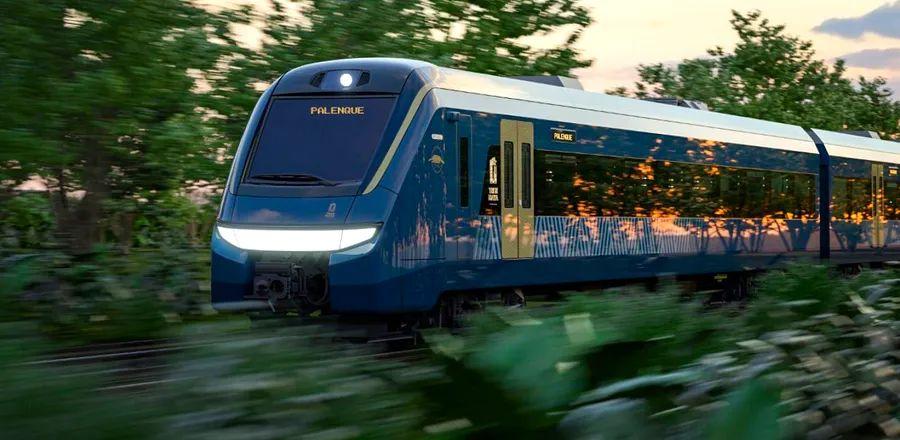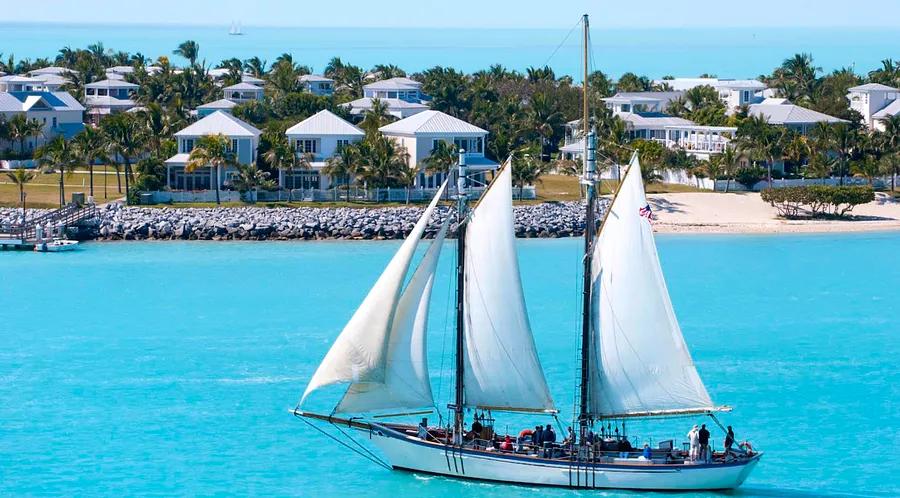Mexico’s New Maya Train Has Officially Begun Operations, Linking Cancún with Other Yucatán Locations

The momentum is strong for Mexico’s latest tourism initiative, the Tren Maya (Maya Train), which had its first official journey on December 15, 2023. This ambitious multibillion-dollar plan was introduced in 2018 by then-president-elect Andrés Manuel López Obrador, who envisioned a rail system extending 965 miles across five states. By late 2023, the project came to fruition as the inaugural train departed, connecting Cancún to the city of Campeche, 300 miles to the west.
Once fully completed, expected by February 2024, the Tren Maya will include 34 stops across Quintana Roo, Yucatán, Campeche, Tabasco, and Chiapas. For five years, this train has been promoted as a means to help travelers reach Mexico’s more secluded areas while also generating employment opportunities for locals. López Obrador has stated that the Tren Maya is “the most significant public project in the world.” Fonatur, Mexico's national tourism fund, estimates that this railway could create hundreds of thousands of jobs by 2030.
However, travelers are struggling to find current information about the train, such as its routes, ticket purchasing options, and operational sections. Here, you’ll discover all we know at this moment about Mexico’s new Tren Maya.
Which sections of the Tren Maya are currently operational?
As of now, the operational route runs from Cancún to Campeche, with a further extension to Palenque. The train passes through the following stations:
- Cancún Airport
- Leona Vicario
- Nuevo Xcán
- Valladolid
- Chichén-Itzá
- Izamal
- Tixkokob
- Teya Mérida
- Umán
- Maxcanú
- Calkiní
- Hecelchakán
- Tenabo
- San Francisco de Campeche
- Escárcega
- Palenque
Eventually, the route will loop back to Cancún, connecting these stations:
- Puerto Morelos
- Playa del Carmen
- Tulum
- Tulum Airport
- Felipe Carrillo Puerto
- Limones-Chacchoben
- Bacalar
- Chetumal Airport
- Nicolás B. Konhunlich
- Xpujil
- Calakmul
- Centenario

Image courtesy of Tren Maya
How can I purchase tickets for the Tren Maya?
Tickets for the train can be purchased through the Tren Maya website. This link directs you to a form where you can choose your preferred route—currently, the only available route is from Cancún to Palenque—along with your starting and ending stations, as well as your desired departure date and time. After selecting your seat, you will be redirected to the BBVA Mexico bank page to finalize your payment.
Prices for tickets on the Tren Maya are relatively high. A regular tourist class ticket from Cancún Airport to Palenque costs 2,118 pesos (approximately US$122, based on current exchange rates). If you opt for the upgraded Premier cabin, tickets are priced at 3,382 pesos (around US$196). The journey from Cancún to Palenque, which spans just over 500 miles, takes about nine hours.
For comparison, a ticket on an ADO bus, one of Mexico's largest private bus companies, from Cancún to Palenque costs 1,300 pesos (about US$75) and has a travel time of 13 hours. Renting a car from Cancún Airport can start at as low as $7 USD per day, with a drive time of roughly 10 hours.

Image courtesy of Tren Maya
What can passengers expect from the onboard experience on the Tren Maya?
Given the high ticket prices, you might be curious about what the onboard experience offers on the Tren Maya. Upon completion, there will be three different types of rail service. Each train can achieve speeds of up to 100 miles per hour. The cars are designed with large windows for plenty of natural light and scenic views, seats equipped with charging outlets, and Wi-Fi access throughout the train.
The regular service is known as Xiinbal, which serves as the standard commuter option suitable for short journeys. This train, which is already operational, includes a bar car offering food services. A second train aimed at culinary enthusiasts, Janal, will debut later and will feature a dining car serving traditional Mayan cuisine. A third option, P’atal, is in development and will be tailored for long-distance travel, featuring reclining seats and sleeper cabins.

Image courtesy of Tren Maya
Currently, Xiinbal is the only operational train service, offering two classes: Tourist and Premier. The primary distinction is that Premier class features a 2-1 seat layout, while Tourist class has a 2-2 configuration.
A contentious initiative
The Tren Maya project represents a significant achievement for the López Obrador administration. However, it has faced considerable backlash, particularly from environmental organizations. According to The Wall Street Journal, over 3 million trees have been felled to make way for the route, severely impacting the natural habitats of local wildlife such as jaguars and spider monkeys. Additionally, the train’s route will increase visibility for Mayan communities that have remained largely untouched by the overtourism affecting other parts of the Mexican Caribbean.
Furthermore, the initial cost estimates for the train were around $7.5 billion, but they have surged to approximately $30 billion, as reported by the Financial Times.
Regardless of individual perspectives on the Tren Maya, it is undeniable that it will significantly transform tourism in Mexico’s Yucatán Peninsula, dramatically influencing how travelers navigate the region and their future destination choices.
Evaluation :
5/5



